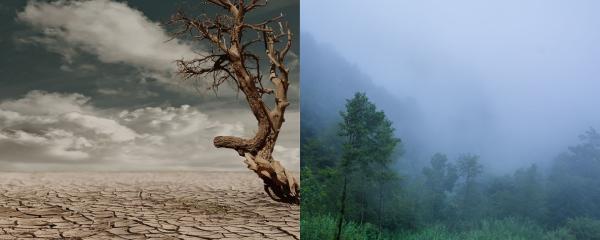
IIT Palakkad study shows how different indices used to predict drought combined with effects fof climate change can lead to different climate predictions for the future

IIT Palakkad study shows how different indices used to predict drought combined with effects fof climate change can lead to different climate predictions for the future
Scientists from Indian Institute of Soil Science, Bhopal, and Indian Institute of Agricultural Research, New Delhi, both part of the Indian Council of Agricultural Research (ICAR), have been studying the effects of climate factors and use of insecticides on the ability of soil to consume methane. Their study reveals one of the harmful effects of the insecticide- Chlorpyrifos, and a way to tackle the issue.
Researchers from the Indian Institute of Science Education and Research (IISER), Bhopal, reveal an intricate molecular relationship scripted by cancerous cells to alter the healthy metabolism of healthy cells.
The superbug series: Part 3. The final of a three part series talks about antibiotic resistance showed by disease causing bacteria, its reasons, the problems associated with antibiotic resistance and the severity of the issue in India.
Researchers from the Indian Institute of Technology, Delhi, offer critical insights into the intrinsic nature of certain types of rice that can resist drought.
A team of researchers from Indian Institute of Technology Bombay, Mumbai, UNESCO-IHE Institute for Water Education, Netherlands, and the Department of Harbour, Coastal and Offshore engineering, Netherlands have come up with a cost effective and efficient method to measure the depth of shallow water. Combining satellite imagery and echo-sounding data, along with a machine learning technique, the team has produced an economical solution to the depth measurement challenge.
Scientists from the Indian Institute of Astrophysics (IIA), Bangalore, University of Notre Dame, USA and Universidad de La Laguna, Spain attempt to trace out how elements form by analysing the spectra of ancient stars.
Researchers from Raja Ramanna Centre for Advanced Technology, Indore, Homi Bhabha National Institute, Mumbai, Indian Institute of Technology Delhi, Delhi, and Bhabha Atomic Research Centre Facility, Visakhapatnam are studying speckle variance optical coherence tomography—a new method of microscopy used to study biological materials. Their recent study checked for the possibility of using the method to microscopically monitor wound healing in real time.
How hard is it shop for a few groceries? The majority of us may find this to be a trivial task. But, close to one billion people all over the world may find this an arduous one. Why? Because, unlike most of us, they live with long-term physical, mental, intellectual or sensory impairments.
New vaccine developed by scientists from the Department of Science and Technology, Government of Gujarat, against the zootonic disease Leptospirosis.
Scientists at the Indian Institute of Science (IISc), Bengaluru have developed a data driven software platform that can efficiently manage Internet of Things (IoT) resources and applications. The software, if commercialized, could be employed for efficient management of smart cities.